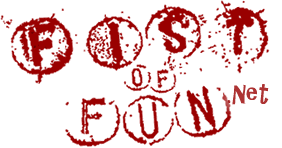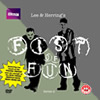Press Archives
Reference Articles
LIONEL NIMROD's INEXPLICABLE WORLD - By Radio Haha
Radio 4 - Series One 1992, Series Two 1993 (partially repeated on Radio 1)
Notable as the first radio show in which the prolific double-act of Richard Herring and Stewart Lee actually appeared: they had previously written for Week Ending, created The End of the Roadshow and co-written the hugely successful On The Hour.
Unlike most of their later work, the Inexplicable World had a theme: it was billed as a “new age comedy series” and purported to investigate the paranormal and mysterious. This was presumably introduced in order to get the show commissioned: Lee and Herring’s clear preference is for an idiosyncratic style using characters based on their own personalities, and they are at their best when not working towards any particular agenda. The duo scored an important victory when they were allowed to present the show under their own names, rather than, as originally suggested, in the guise of eccentric characters (as would usually be expected with this kind of format).
Lionel Nimrod represents an important stepping-stone towards later projects which were better suited to their style; it is still, however, a strong series in its own right. The naming of the series presumably imitates the depressing TV convention whereby a mediocre documentary-type series has the name of a relevant celebrity (whose actual contribution is minimal) tacked onto it in in order to gain credibility.
‘Lionel Nimrod’, therefore, is a washed-up sixties sci-fi star (the choice of name might suggest one role model in particular…) who apparently played “Mackay the Morloi” in the cult series “Star Ark”, and he appears only in brief introductory and concluding monologues edited onto either end of each show — until the last programme of the second series, in which he makes a dramatic deus ex machina appearance in the flesh. Nimrod was played (brilliantly) by Tom Baker, whose role as the fourth Doctor Who eminently qualified him for the task.
Following Lionel’s atmospheric and sinister introduction, however, the listener would be plunged into the now-familiar idiot world of Lee and Herring, who each week addressed a particular source of mystery and wonder (‘The Human Mind’, ‘Magic’, ‘Death and the Afterlife’, etc) with a mixture of sharp one-liners, character dialogue routines and sketches dressed up as reports. Surprisingly, these always stayed relevant to the area being investigated; even more surprisingly, the presenters always managed to wind up the show with some kind of firm conclusion — although not necessarily a particularly helpful one.
As well as presenting the show, Herring and Lee played some of the character parts themselves. The other male parts were taken by Armando Iannucci, in a rare acting-only role; these included regular contributor Peter Fenn, star of “Peter Fenn’s Hammond Organ Believe-It-Or-Not Spot”, in which a wryly amusing snippet of information would be relayed to the accompaniment of a popular easy-listening classic.
The female parts were played by the ubiquitous Rebecca Front (although Carla Mendonça substituted for her in one Series Two programme).
The last programme of the first series also featured a brief, uncredited appearance from a promising writer and comedian by the name of Peter Baynham, who was to play a more important role in the majority of Lee and Herring’s subsequent radio and television projects.
The second series, which included four programmes recorded on location at student venues, received a partial repeat on Radio 1 immediately after its first transmission; this was followed (barely a month later) by a new series, Lee and Herring’s Fist Of Fun, which went out exclusively on the more youth-oriented network.
Three more Radio 1 series and several television series followed.

